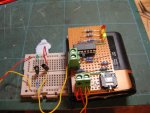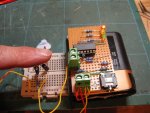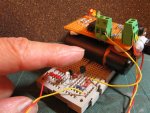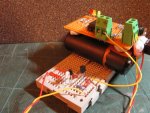Hi Boriz,I used a digital camera > Put image on PC > Edited image for size and framing > Uploaded it to a host (in this case my own webspace provided free by my ISP) > Copied the URL of the image > Embedded the image into my post by using the IMG tags thus: {img}http://image_url.jpg{/img}
(Note you must replace '{' with '[', and replace '}' with ']'. If I had typed it that way, the forum would think I am trying to post an image)
Once you know the URL of an image anyplace on the net, you can embed it in your post with the IMG tags.
If you right-click my image above > Select properties. You can see the URL of the image. Same with any image on any webpage.
I've dicovered another way of uploading pic's
1 take photo
2 download onto pc
3 right click on photo and click on send to mail recipent
4 choose the option to make photos smaller
5 email to your self
6 from sent items right click and save photos now much reduced in size
7 use the manage attachment options as discribed by eclectic to attach photos




